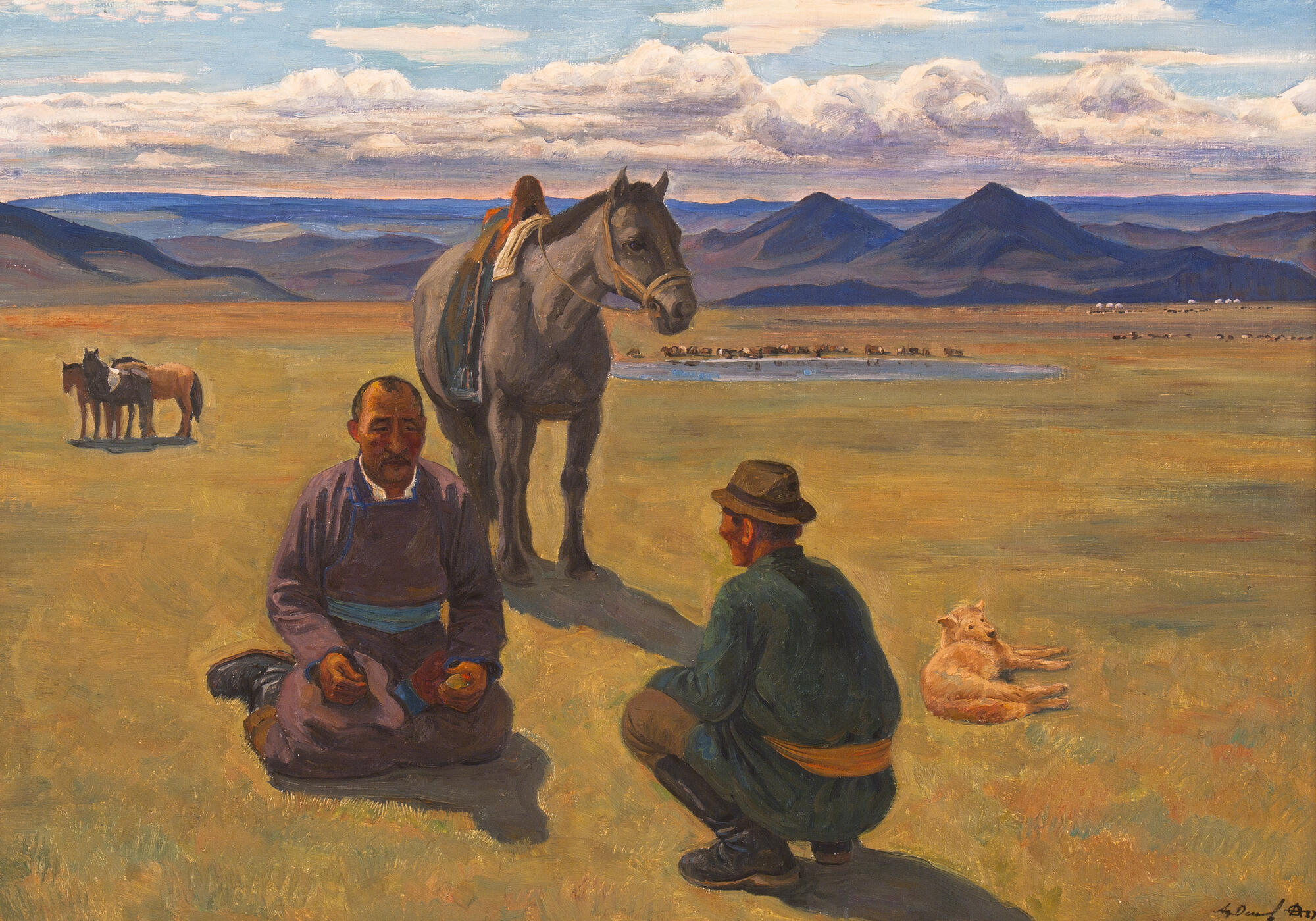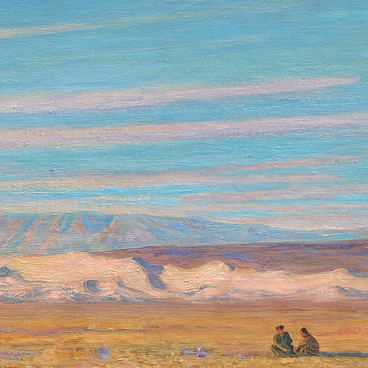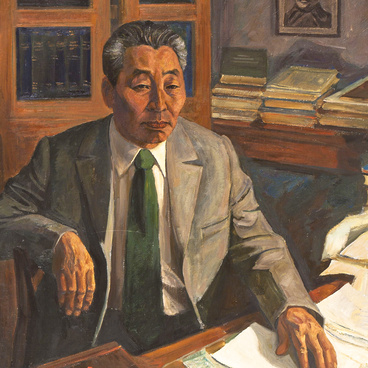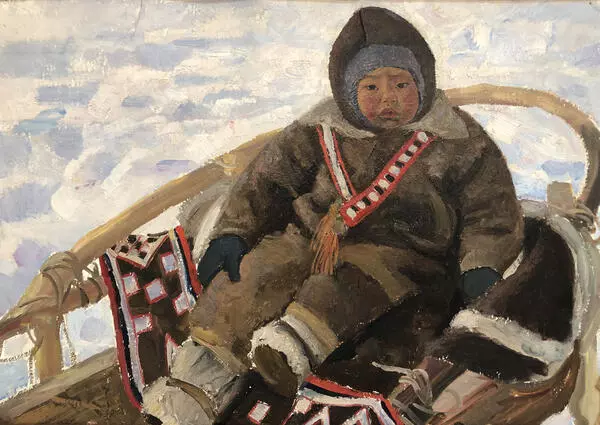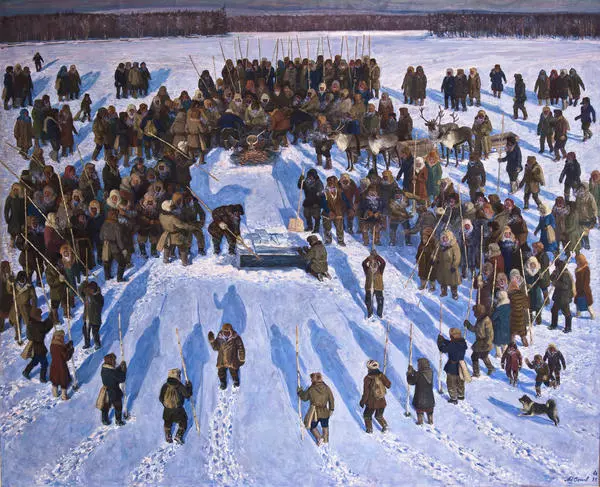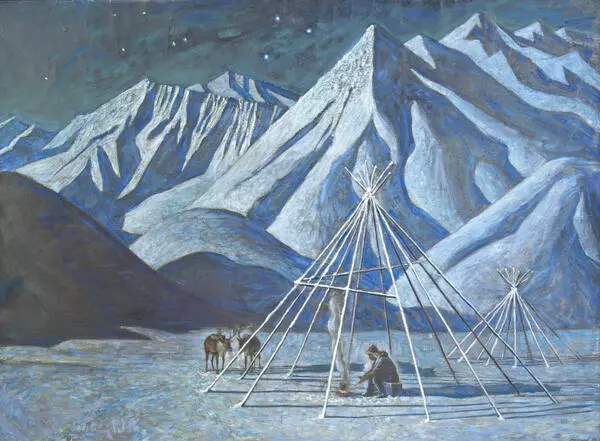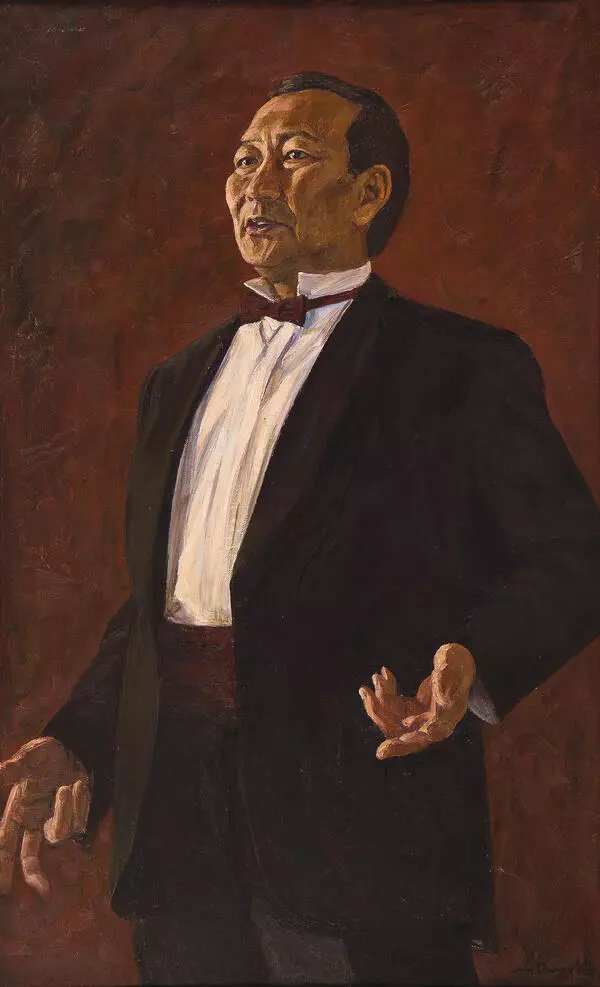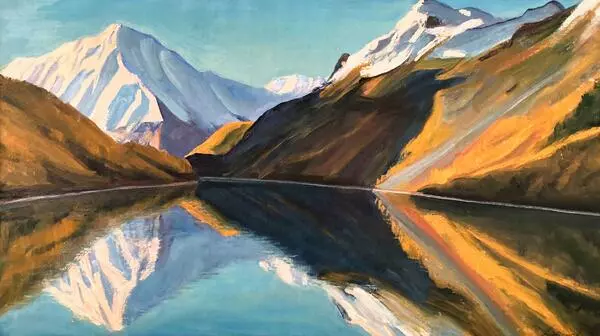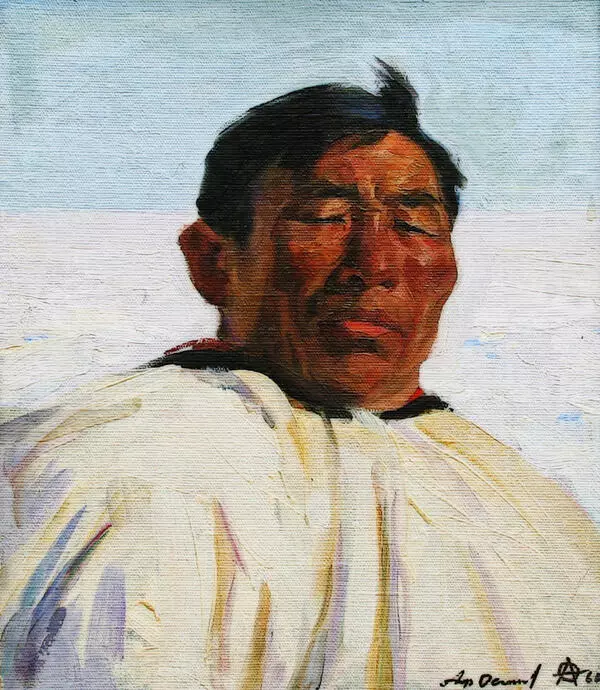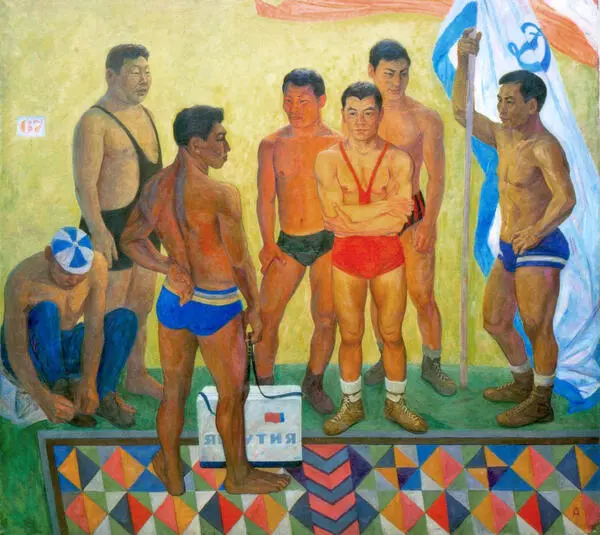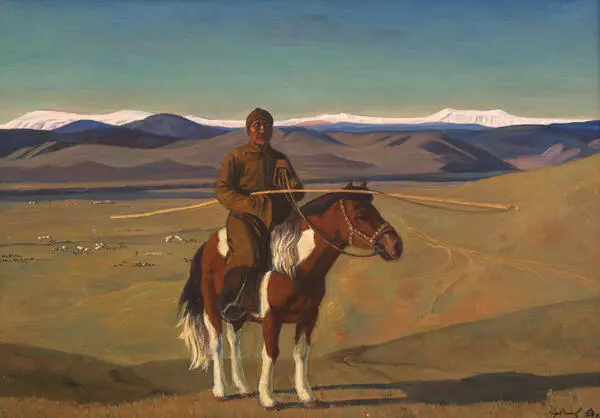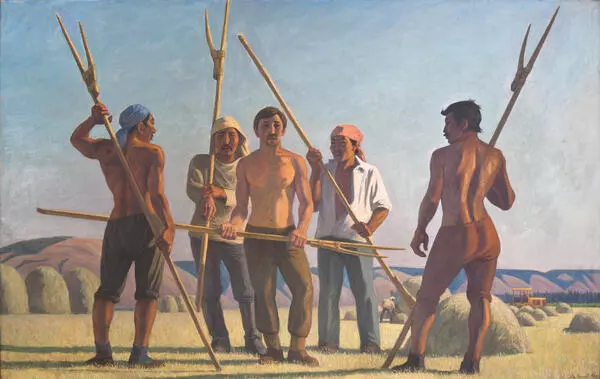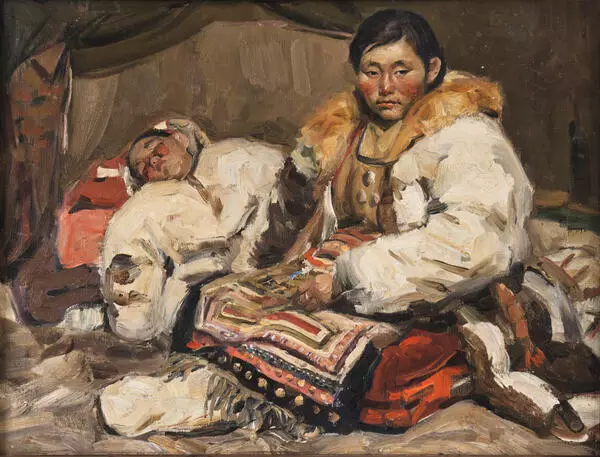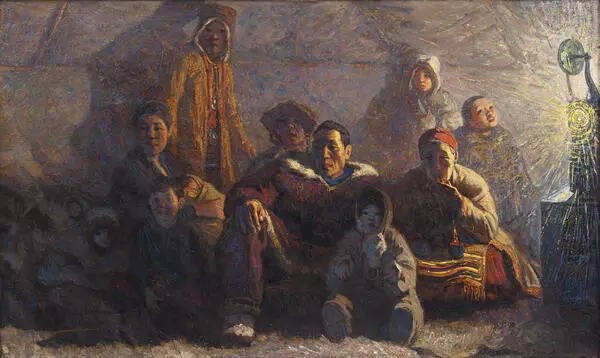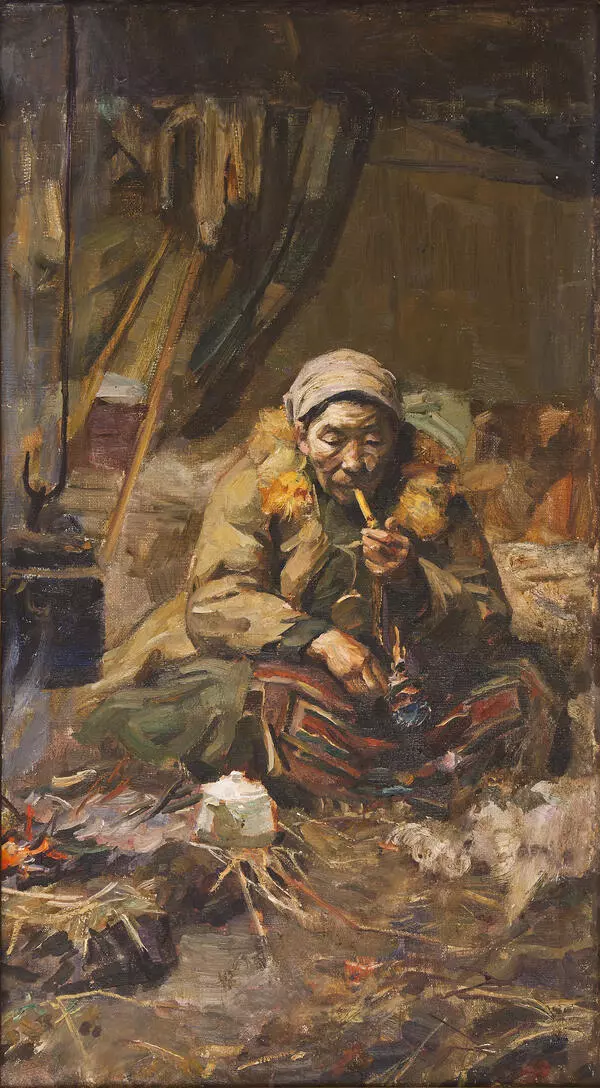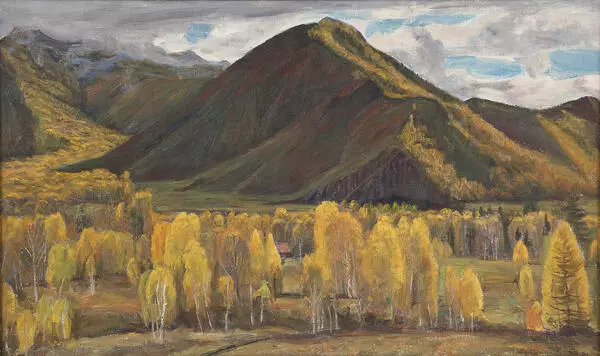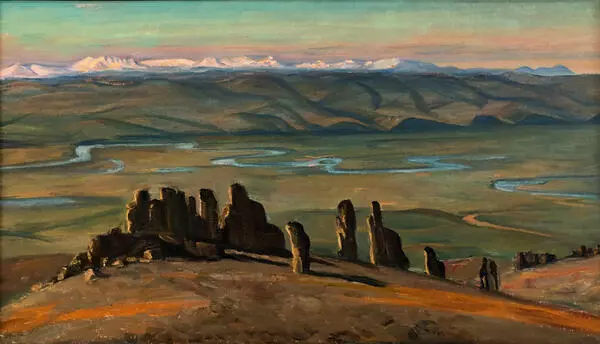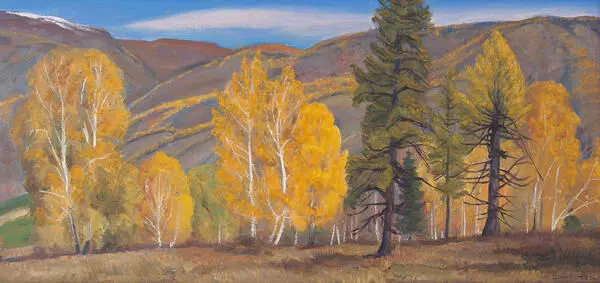Yakut painter Afanasy Osipov was born on February 28, 1928. He was born in the Yakut village, and in his youth, after finishing school and technical school, he went to Moscow to study at the Moscow Secondary Art school at the V.I. Surikov Institute, and then entered the institute. Osipov participated in all-union and foreign art exhibitions, became a People’s Artist of the USSR, an academician of the Russian Academy of Arts, and was awarded the I. Repin State Prize of the Russian Federation.
The National Art Museum of the Republic of Sakha (Yakutia) presents Afanasy Osipov’s triptych ‘Arkhangai Arats’. A triptych is a work consisting of three parts united by a common idea. Afanasy Osipov dedicated it to the Arkhangai Arats. This is the name of the nomadic people who live in the area of Arkhangai on the territory of modern Mongolia. Their main occupation is cattle breeding.
In the left part of the triptych ‘Arkhangai Arats’, in the foreground there are two Arats and a saddled horse. A horse in the culture of ancient nomads is a living image of a deity.
As part of the triptych, the work is in many ways close to the canvas ‘Drovers’. Most of Afanasy Osipov’s works from the Mongolian cycle show the authentic life of nomadic villagers. For several centuries, the life of nomadic Arats has not changed much, because they honor the traditional technologies of animal care and grazing.
The Arats are dressed in national clothes. It is due to the harsh climate and adapted to a nomadic lifestyle. It is thought out its smallest detail. Travelers noted that these people created clothes that fit all seasons and needs. The traditional Aratian robe was worn both on working days and on holidays. It looked like a long, loose, one-piece robe with sleeves and a collar. The wide skirts of the robe were laid on top of each other in front and secured with a belt.
The painting is made in a mixed color scheme. The warm foreground and middle ground, i.e. the scorched grass in the valley and the animals grazing here, is replaced by a cold palette of cloud-shaded mountains and the horizon in a blue haze.
The National Art Museum of the Republic of Sakha (Yakutia) presents Afanasy Osipov’s triptych ‘Arkhangai Arats’. A triptych is a work consisting of three parts united by a common idea. Afanasy Osipov dedicated it to the Arkhangai Arats. This is the name of the nomadic people who live in the area of Arkhangai on the territory of modern Mongolia. Their main occupation is cattle breeding.
In the left part of the triptych ‘Arkhangai Arats’, in the foreground there are two Arats and a saddled horse. A horse in the culture of ancient nomads is a living image of a deity.
As part of the triptych, the work is in many ways close to the canvas ‘Drovers’. Most of Afanasy Osipov’s works from the Mongolian cycle show the authentic life of nomadic villagers. For several centuries, the life of nomadic Arats has not changed much, because they honor the traditional technologies of animal care and grazing.
The Arats are dressed in national clothes. It is due to the harsh climate and adapted to a nomadic lifestyle. It is thought out its smallest detail. Travelers noted that these people created clothes that fit all seasons and needs. The traditional Aratian robe was worn both on working days and on holidays. It looked like a long, loose, one-piece robe with sleeves and a collar. The wide skirts of the robe were laid on top of each other in front and secured with a belt.
The painting is made in a mixed color scheme. The warm foreground and middle ground, i.e. the scorched grass in the valley and the animals grazing here, is replaced by a cold palette of cloud-shaded mountains and the horizon in a blue haze.
